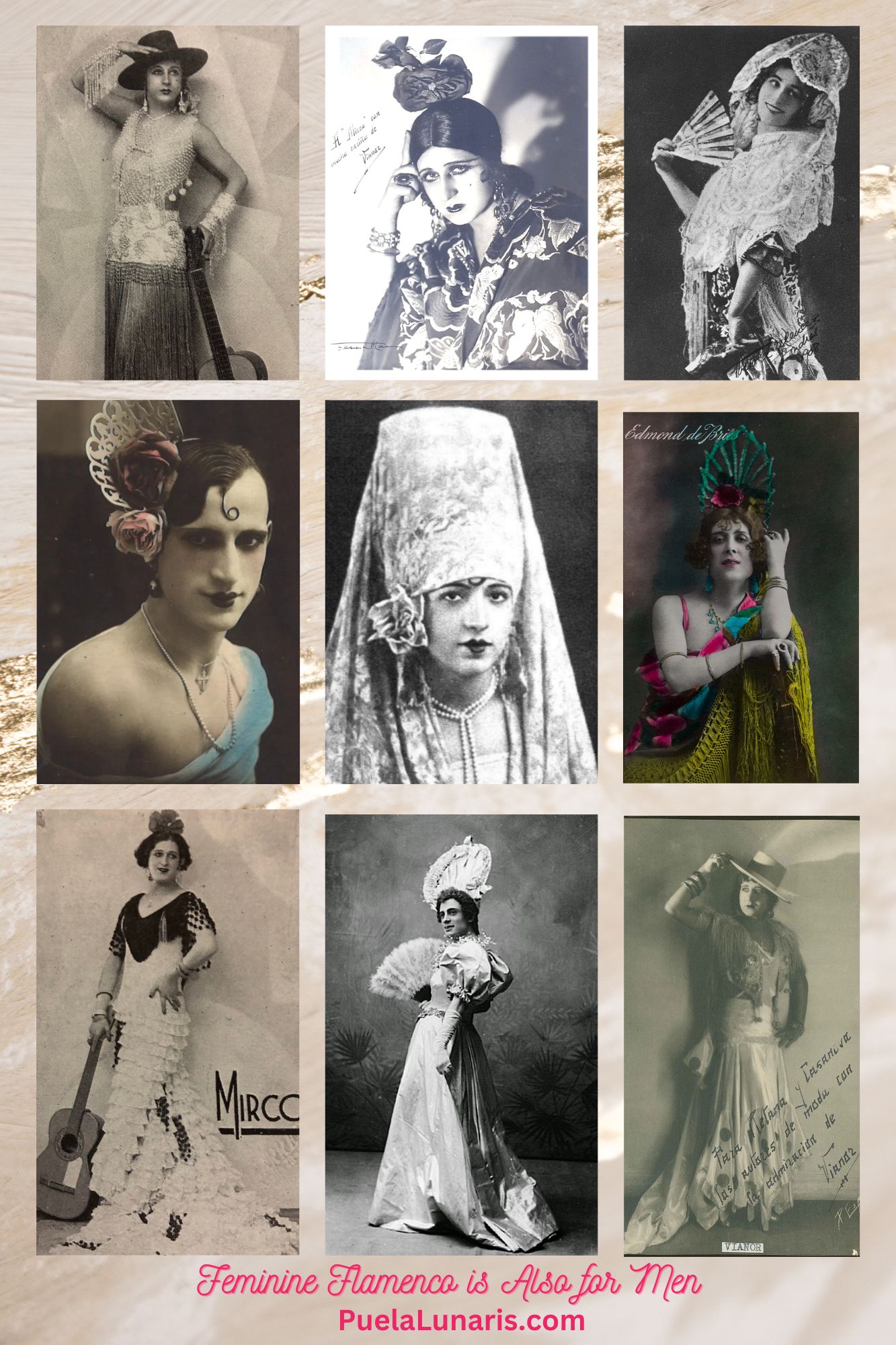The Revival of Feminine Flamenco, Danced by All Genders
Empowering Grace: Embracing the Forgotten Feminine in Flamenco.
A Journey with Fernando López
Hola, amig@s! Today, I am absolutely thrilled to take you on an exciting journey into the world of feminine Flamenco, alongside none other than the remarkable Fernando López. As a flamenco dancer, philosopher, and researcher, his work has shed light on important and often-neglected aspects of Flamenco's queer history.
Together, we'll embark on a journey to rediscover the forgotten feminine, a treasure trove of sensuality and expression in Flamenco that has been overlooked for far too long!
Femininity and masculinity are universal attributes that can be expressed through any individual, regardless of gender. However, in the world of Flamenco, the feminine has been despised and ignored for many years.
Reminiscing the Original Flamenco Style
The original feminine flamenco style, which emphasizes sensual movements of the hands, arms, torso, and hips, instead of footwork, once held an essential place in Flamenco's history. Sadly, it has been overshadowed and disregarded until recent years, so much so that many people cannot even conceive of Flamenco without footwork.
Reclaiming the Forgotten Gems: Men Expressing the Feminine Dance in Flamenco
While women doing masculine dance in flamenco, such as La Cuenca and Carmen Amaya, have been extensively studied by scholars and flamenco historians, men doing feminine dance in flamenco have been totally ignored by most flamenco historians and scholars, as if they had never existed.
Some of the names of men who wore skirts and danced feminine flamenco are Vianor, Mirco, Egmont D'Bries, La Perla Murciana, Antonio Alonso, and La Asturiana. I never found any of them in flamenco history books. I only recently learned about them through the work of Fernando López, who is bringing to light the queer history of flamenco.
Fernando's Pioneering Work
Fernando López's research and groundbreaking book, "A Queer History of Flamenco," delves into the history of Flamenco and its queer dimensions, unveiling the diverse expressions and identities present in this art form.

For more than 25 years, I have been researching and reviving the original, old-school, feminine flamenco style danced by legendary women. Now, through Fernando's work, I am delighted to discover all these men who also expressed the essence of feminine flamenco.
The Footwork-Centric Shift in Flamenco
Since the 1930s, Flamenco underwent a transformation, and it increasingly became a footwork-centric masculine dance form. This shift saw a significant emphasis on technique and complexity, often at the expense of the graceful and expressive elements of the feminine dance. Iconic dancer Carmen Amaya with her impressive fast and furious footwork created a revolution and played a pivotal role in shaping Flamenco's modern trajectory.
Skirt Dancing: From Flamenco to International Mesmerizing Spectacles
On the other hand, Skirt Dancing (except for Bata de Cola) has been quite ignored in modern Flamenco. Skirt Dancing may seem simple, but as I dedicated myself to the study and revival of the forgotten feminine aspects of Flamenco, I have codified more than 33 distinct flamenco skirt dance techniques, using what we call "falda de vuelo, falda gitana, or falda de volantes."
Using the skirt as an artistic prop is not only a flamenco "thing." There are many cultures around the world that feature skirt dances. In fact, Skirt Dancing was all the craze of the late 1800s and the early 1900s in Europe and the USA. Even modern dance pioneers such as Ruth St. Denis and Loie Fuller began their careers as skirt dancers. These dancers made their mark on the international dance scene and created mesmerizing spectacles with simple, spellbinding movements.
The Legacy of Loie Fuller
Loie Fuller, in particular, remains a profound inspiration for me in regards to Skirt Dancing because she validated my natural tendency to dance with fabrics as an artistic prop, be it skirts, capes, veils, or shawls.
La Loïe (as she was known in Paris) started as a skirt dancer and transformed her performances into high art by expanding the length to her skirts through the use of sticks and incorporating innovative lighting techniques, which at that time was a new technology.
Her work shows that simplicity does not equate to insignificance, and with creativity, even the most straightforward movements can hold immense artistic value.
Flamenco Made Easy
And there you have it, my dear amig@s! Our journey alongside Fernando López has been nothing short of magical. I'll continue to celebrate the universality of femininity and masculinity in Flamenco while embracing the beauty of the original feminine dance.
With a renewed appreciation for simplicity, I continue to foster Lunaris Feminine Flamenco™, a simpler, easier, less intimidating form of flamenco that everybody can dance. ¡Hasta pronto!
Click here for a FREE Feminine Flamenco Online Course
🌟💃🏽💚
FREE Virtual Tour
Flamenco as a Living Ritual
Discover Flamenco as a living tradition
in our upcoming documentary ¡Zambomba!





